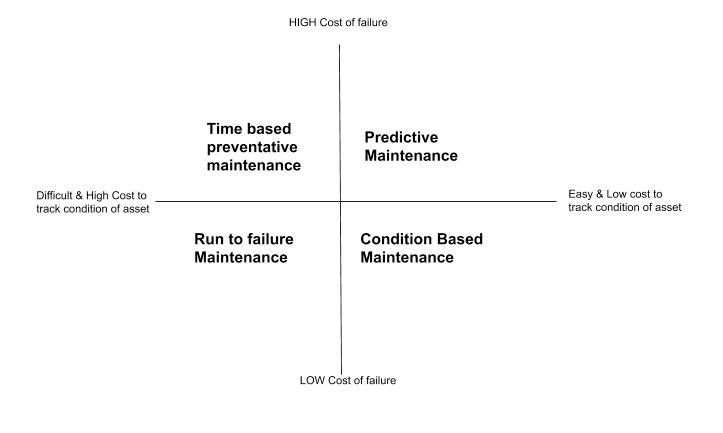Something is satisfying about the arcade game called, “Whack A Mole.” You get to test your reflexes and whack the stuffed figure when it pops its head up. Whack A Mole is not a maintenance strategy, but some companies use it for theirs.
A process to develop your maintenance strategy was recommended by A.K. Gupta in his book, Reliability, Maintenance and Safety Engineering. Gupta makes the recommendation to establish your plan based upon your team’s goals and available resources.
He recommends that program designers answer these questions:
- Critical assets: What are the most important items or critical assets?
- Legal requirements: What legal requirements need to be considered?
- Work planning: When can work be performed to avoid production loss?
- Frequency: At what frequency should surveys, inspections, work, and tests be performed?
- Money: Where does the money come from?
A major component of developing a plan involves building a team who has a stake in the plan’s success. It is also essential in creating a partnership with groups who can provide the resources to help the program be successful.

Critical assets
There are many programs or systems to use in determining which assets are crucial to your organization. ISO 55000 does not specify a specific process. However, it does call out that organizing information relative to establishing a process is data intensive.
A team would probably do well to create a spreadsheet or decision matrix to establish equipment criticality.
Essential items of information that can assist in the process are:
- CMMS records
- Production forecasts
- Production history
- Safety records
- QA standards or regulations
- Financial impact
- Labor costs and availability
Legal requirements
Your organization’s legal team will help define the legal requirements for asset maintenance. A growing movement is to consider the entire life cycle of an asset. Establishing an asset’s life cycle may not be a specific legal requirement, but the protection of investors’ assets is essential. Uptime Magazine recently laid out the need for life cycle planning as the right thing to do.
A consideration for maintenance strategy is the disposal of an asset and its components and fluids. Some assets contain hazardous materials. Documentation of their proper placement is critical. Electrical components of many electronic systems include dangerous substances. Large organizations should even track the appropriate disposal of batteries.
Work planning
Industries with peak seasons and specific schedules should include production schedules in their maintenance strategy. It will be challenging to complete a significant asset’s overhaul if it reduces production capabilities.
Production schedules requiring significant maintenance and technical support for changeovers or product modifications are essential decision components when developing a strategy. Coordination with a team that includes maintenance and production personnel will assist in understanding the needs of the entire organization. Silo building stops with an agreement of priorities within an organization.
Frequency
Frequency is a term used in predictive maintenance (PdM) planning. It is also a consideration when determining maintenance and customer needs.
Frequency considerations could include:
- What should your maintenance labor staffing be during production?
- Do crew schedules get set on a permanent or seasonal basis to match startup support?
- How are holidays and weekends to be treated for production and maintenance schedules?
- Can production teams agree to a “drumbeat” schedule where there are mandatory shutdowns for heavy maintenance?
Money
All departments within an organization compete for funds. It is essential that facts support discussions around money and maintenance strategy. A partnership among competing teams will help establish expectations as well as resource requirements. For example, a maintenance department can outline the expected results of incomplete scheduled maintenance.
Labor is probably the most significant component of any organization. Teams that have gone through the steps of determining a strategy will have a basis of determining staffing levels. A well-planned CMMS can provide information required for the various maintenance efforts. It can outline the labor hours and parts needed for each task.
Labor Cost Per Asset Task * Number of Assets = Maintenance Labor Cost per Strategy in Dollars and Hours
Costs outlined in dollars and hours help establish expectations and plans for a maintenance strategy. The challenge is to not be in a “pay me now or pay me later” discussion. Everyone can own and support the strategy when they are at the table of its design.
Successful companies are embracing the Total Productive Maintenance (TPM) belief. TPM ties the entire team to the operation and condition of assets. For instance, operators support some of the technical tasks that free up maintenance teams to perform the higher levels of technical work.
Another critical component of money is the stocking level of parts and supplies for maintenance activities. Spares stocking costs money for purchasing. Also, many companies are charged taxes for those parts kept in their storerooms.
Some corporate headquarters are pushing the question of stocking levels to individual plants and activities. They believe that the attention of the smaller units’ is better focused when the cost of taxes on stock levels are a portion of the smaller organization’s performance measurement than hidden within the larger organization’s bottom line.
Conclusion
Team communication is critical when building a maintenance strategy. Informed members can provide advocacy and support for the activity and each member of the team receives new insights. This new vision of success becomes everyone’s business.

![[Review Badge] Gartner Peer Insights (Dark)](https://www.datocms-assets.com/38028/1673900494-gartner-logo-dark.png?auto=compress&fm=webp&w=336)
